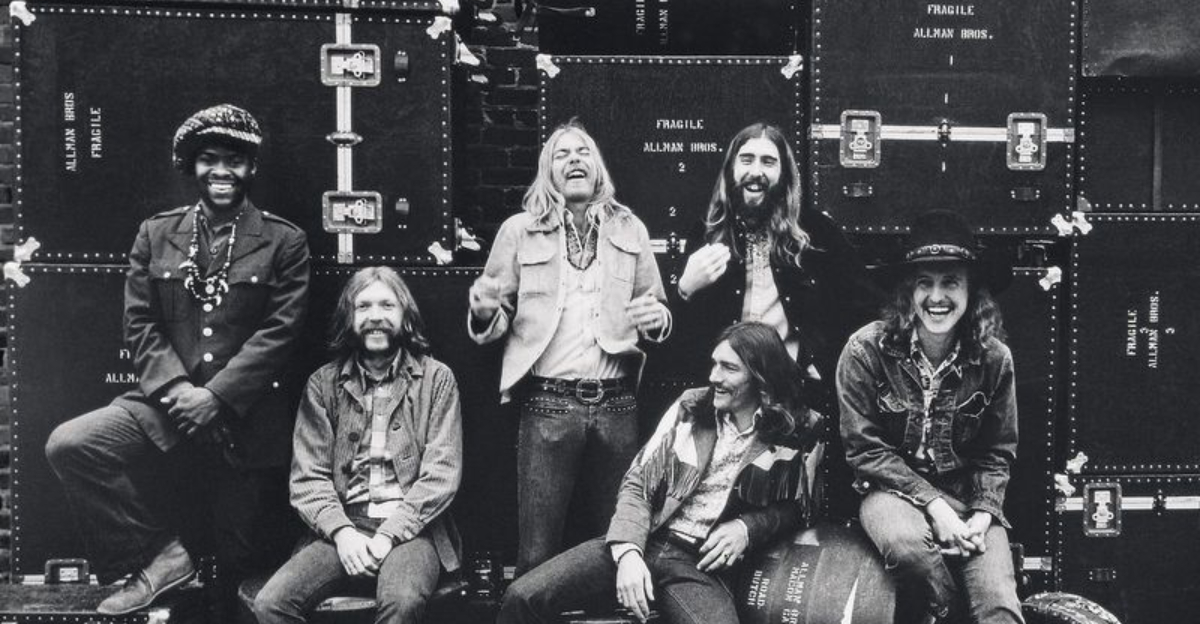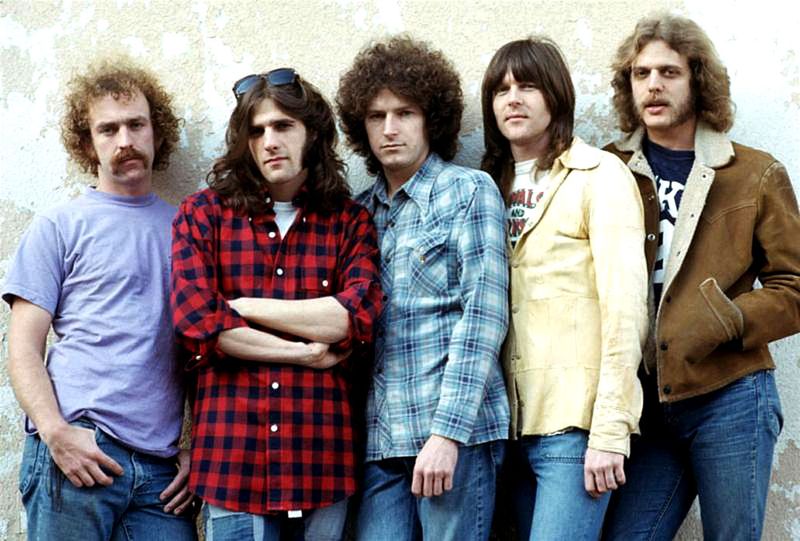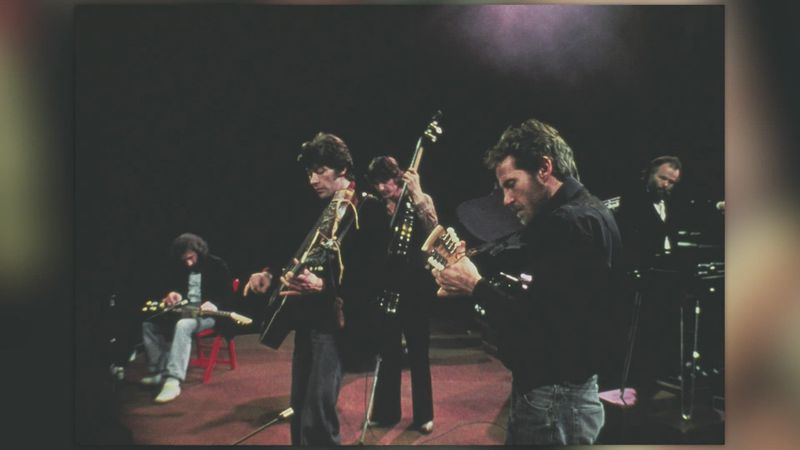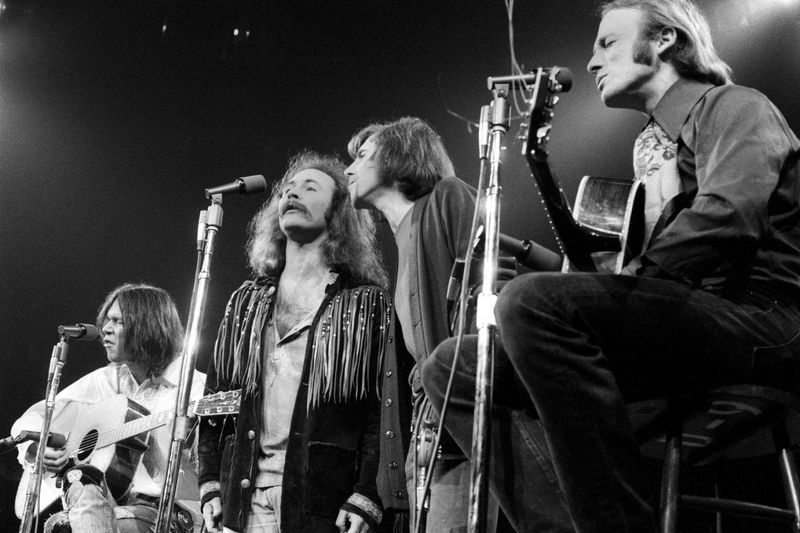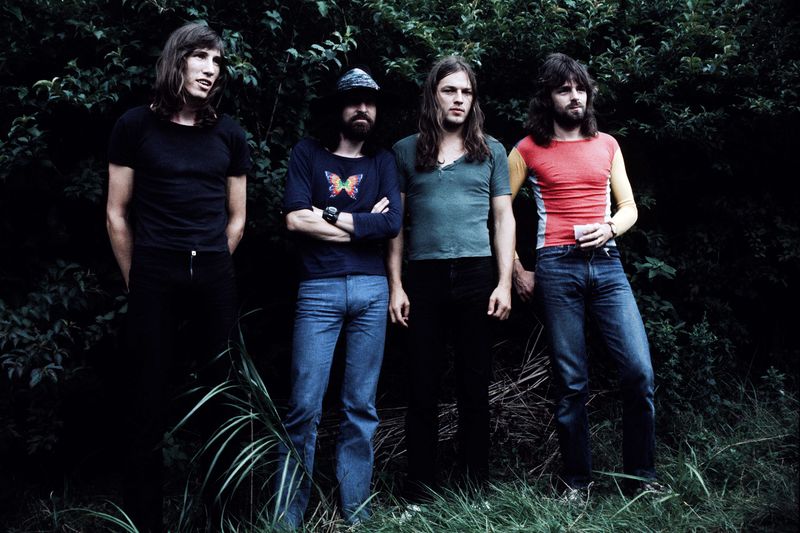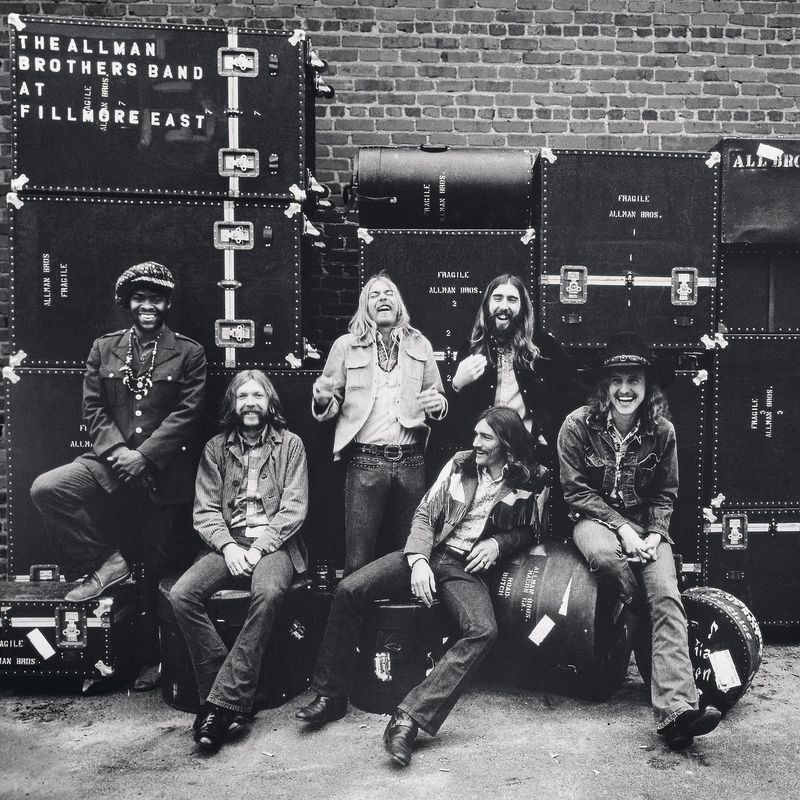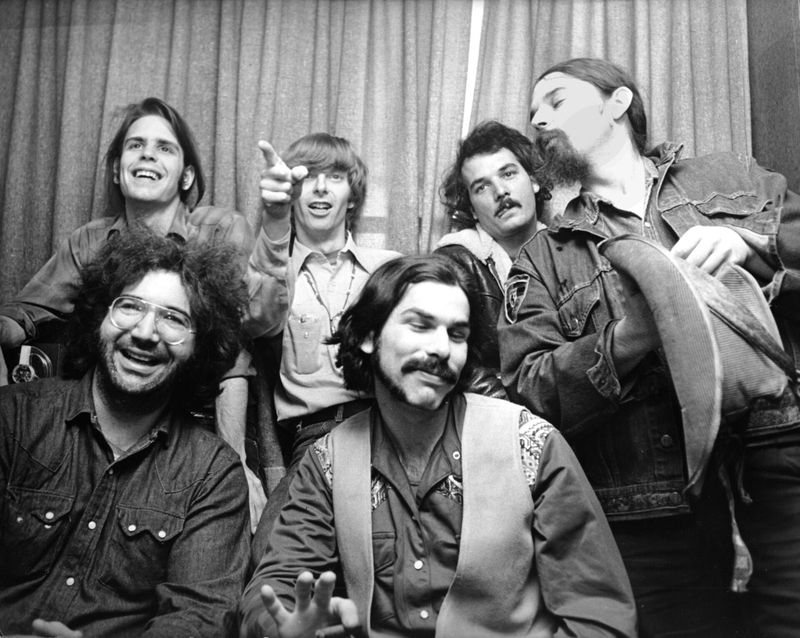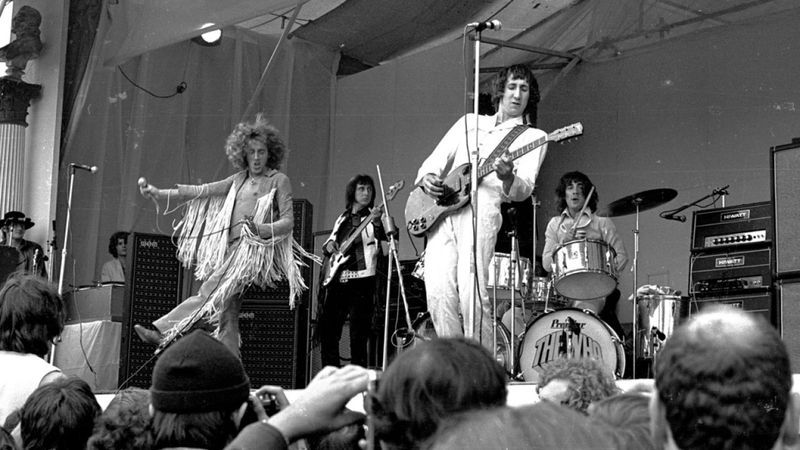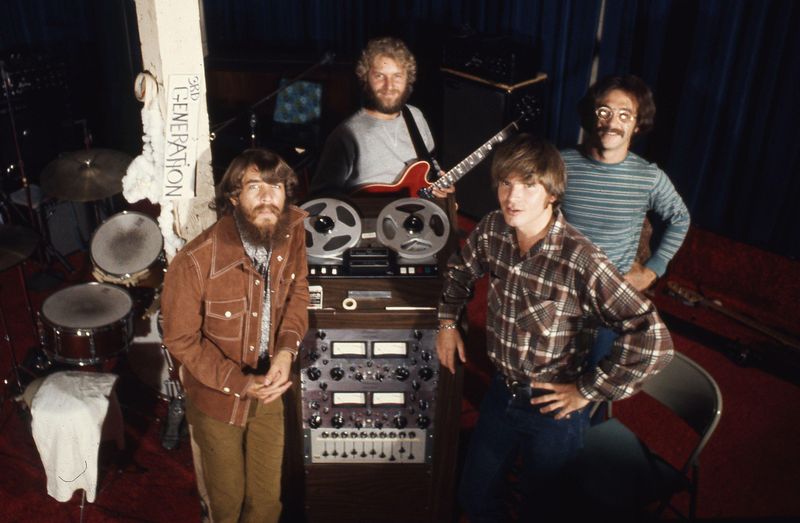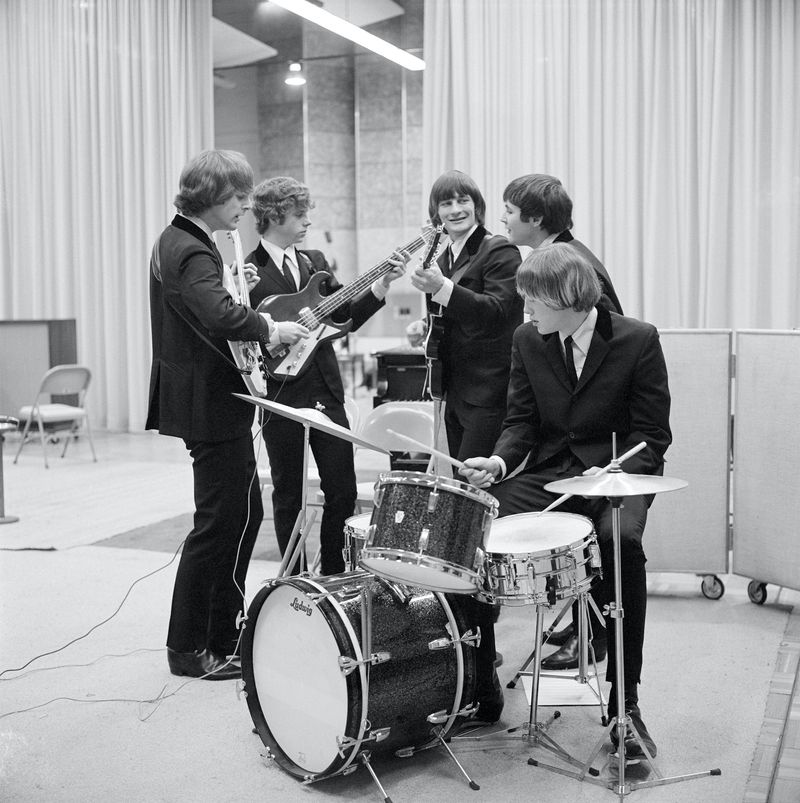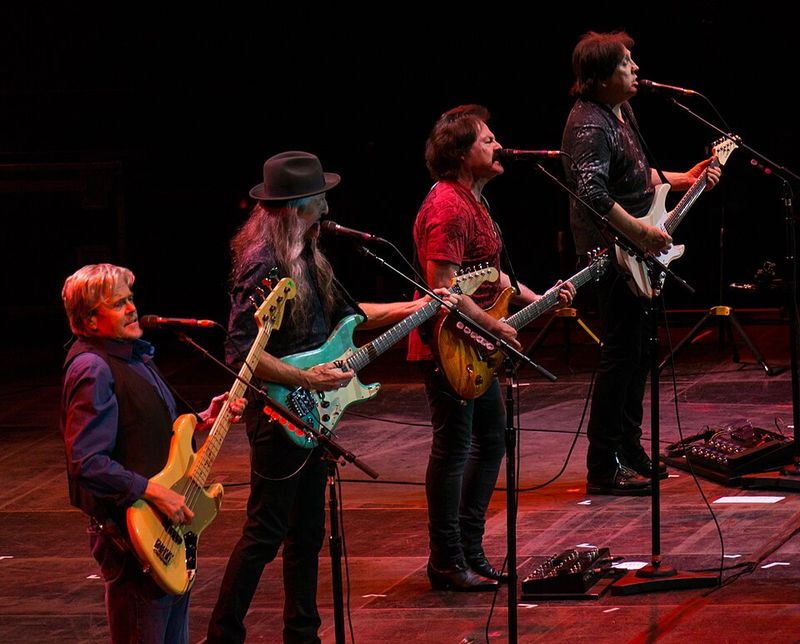Explore the fascinating world of classic rock where some legendary bands were not just fronted by one or two lead singers, but showcased a rich tapestry of vocal talent. This post highlights 15 such bands that featured more than two lead singers, adding layers to their iconic sounds and unforgettable performances.
1. The Beatles
With Lennon and McCartney’s vocals at the forefront, The Beatles were known for their harmonious blend. However, George Harrison added depth with songs like “While My Guitar Gently Weeps,” while Ringo Starr charmed listeners with tracks like “With a Little Help from My Friends.” Their varied vocal styles created a dynamic sound that defined a generation. The Beatles’ mastery was not just in their songwriting or instrumentation but also in their ability to share the spotlight among all members, a rarity in rock bands of the era.
2. Fleetwood Mac
Fleetwood Mac’s signature sound owes much to its trio of lead singers. Stevie Nicks brought a mystical rasp to the mix, while Lindsey Buckingham offered sharp, energetic vocals. Christine McVie completed the trio with her smooth, soulful tones. Together, these distinct voices crafted harmonies that became the band’s hallmark, enchanting audiences worldwide. The interplay between these vocalists not only showcased each member’s unique style but also created a vocal blend that was both powerful and unforgettable, making Fleetwood Mac a staple of rock history.
3. The Eagles
The Eagles were known for their rich vocal harmonies, with Glenn Frey and Don Henley as primary voices. Bernie Leadon, Randy Meisner, and later additions like Joe Walsh and Timothy B. Schmit also took lead, offering hits like “Life in the Fast Lane” and “I Can’t Tell You Why.” This variety in vocal talent allowed the Eagles to experiment with different sounds and themes, contributing to their enduring legacy. The band’s ability to integrate multiple lead singers set them apart and enriched their musical tapestry.
4. The Band
The Band’s appeal lay in its vocal diversity. Levon Helm’s gritty Southern voice brought authenticity, while Rick Danko offered a soulful delivery. Richard Manuel’s hauntingly emotive tone added a unique depth, creating a triad of voices that became one of rock’s greatest. Each member’s distinct vocal style contributed to The Band’s rich musical landscape, allowing them to explore a variety of sounds and themes. This vocal blend, combined with their innovative songwriting, secured The Band’s place as pioneers in the rock genre.
5. Crosby, Stills, Nash & Young
Crosby, Stills, Nash & Young were renowned for their unmatched harmonies. With David Crosby, Stephen Stills, Graham Nash, and Neil Young each taking turns at the mic, they crafted songs that resonated deeply. Tracks like “Suite: Judy Blue Eyes” and “Ohio” highlighted their ability to blend voices seamlessly. Each member’s distinct style contributed to their unique sound, making them an iconic group in rock history. Their collaborative spirit and vocal prowess set them apart, delivering performances that were both powerful and harmonious.
6. The Beach Boys
The Beach Boys were synonymous with lush harmonies, showcasing the talents of Brian Wilson, Mike Love, Carl Wilson, Al Jardine, and Bruce Johnston. Brian’s dreamy tones, Mike’s surf-rock energy, and Carl’s soulful voice created iconic tracks like “God Only Knows.” Their ability to weave multiple voices into a cohesive sound was unparalleled, setting the standard for vocal harmony in rock music. The Beach Boys’ innovative approach to melody and harmony made them legends, capturing the essence of California’s sunshine and surf culture.
7. Pink Floyd
Pink Floyd’s sound was defined by its instrumental prowess, with David Gilmour and Roger Waters sharing vocal duties. Richard Wright added depth with his vocals on tracks like “Time,” while Syd Barrett was the original voice on early hits. This blend of vocal talents allowed Pink Floyd to explore complex themes and create a multidimensional soundscape. The band’s ability to merge different voices into their music contributed to their enigmatic and timeless appeal, solidifying their place as pioneers in the psychedelic rock genre.
8. The Allman Brothers Band
Gregg Allman’s bluesy voice was central to The Allman Brothers Band, but Dickey Betts also took the lead on classics like “Ramblin’ Man.” Duane Allman occasionally contributed vocals, adding a rich layer to their sound. Their ability to share vocal duties allowed the band to explore diverse musical paths, enriching their Southern rock legacy. The blend of voices within the band contributed to their dynamic performances and enduring appeal, making them a cornerstone of the Southern rock movement.
9. Grateful Dead
The Grateful Dead’s sound was ever-evolving, with Jerry Garcia’s laid-back vocals, Bob Weir’s sharper delivery, and Ron “Pigpen” McKernan’s blues growl leading the way. Phil Lesh and Donna Jean Godchaux also added vocal layers, enriching the band’s psychedelic and exploratory sound. This vocal diversity allowed the Grateful Dead to adapt and innovate, captivating audiences with their improvisational style. Their ability to integrate multiple vocal styles made them a unique and influential force in rock music history.
10. The Who
Roger Daltrey was The Who’s main voice, but Pete Townshend offered poignant vocals on songs like “I’m One,” and John Entwistle added depth with tracks like “Boris the Spider.” This trio of voices provided a dynamic range that allowed The Who to explore various musical styles and themes. Their vocal interplay contributed to their energetic performances and helped define their rock opera legacy. The Who’s ability to incorporate multiple lead singers set them apart as innovators in the rock genre.
11. Creedence Clearwater Revival
While John Fogerty’s voice was the defining feature of Creedence Clearwater Revival, his brother Tom Fogerty also took lead on tracks like their cover of “Hey Tonight.” This sibling collaboration added a unique dimension to their sound, combining John’s powerful delivery with Tom’s complementary tones. The interplay between the Fogerty brothers contributed to the band’s distinctive Southern rock flair. Their combined vocal efforts helped cement their place in rock history, delivering music that resonated with a wide audience.
12. The Byrds
The Byrds were pioneers of jangly harmonies, with Roger McGuinn, David Crosby, and Gene Clark each taking turns at the mic. Chris Hillman also contributed vocals, enhancing their rich, layered sound. This vocal diversity allowed The Byrds to blend folk and rock influences seamlessly, creating hits that captured the spirit of the 1960s. Their ability to harmonize and share vocal duties set them apart, making them one of the defining bands of their era. Their vocal interplay was key to their enduring influence in rock.
13. Yes
Jon Anderson’s high-pitched voice was the hallmark of Yes, but Chris Squire sang lead on tracks like “Onward.” Trevor Horn and Jon Davison also contributed, adding layers to their progressive rock sound. This diversity in vocal talent allowed Yes to experiment with complex musical patterns and themes. Their vocal harmonies and adventurous compositions set them apart as pioneers in the progressive rock genre, captivating audiences with their intricate soundscapes. Yes’s ability to blend multiple vocal styles was integral to their artistic success.
14. Little Feat
Little Feat’s sound was defined by the gritty voice of Lowell George. Paul Barrère and Bill Payne also shared vocal duties, especially after George’s passing, enriching the band’s sound. Shaun Murphy later joined, adding a new dimension to their music. This blend of vocal talents allowed Little Feat to explore a range of genres, from rock to blues, contributing to their unique style. Their ability to adapt and experiment with multiple vocalists made them a standout group in the rock scene.
15. The Doobie Brothers
The Doobie Brothers were transformed by the soulful voice of Michael McDonald, but Tom Johnston and Patrick Simmons were the original vocalists sharing the spotlight. Their combined efforts created a versatile sound that spanned rock, R&B, and pop. The addition of McDonald brought a new depth, propelling the band to new heights. This rich vocal tapestry allowed The Doobie Brothers to craft memorable hits that resonated with audiences. Their ability to adapt and thrive with multiple lead singers solidified their place in rock history.
